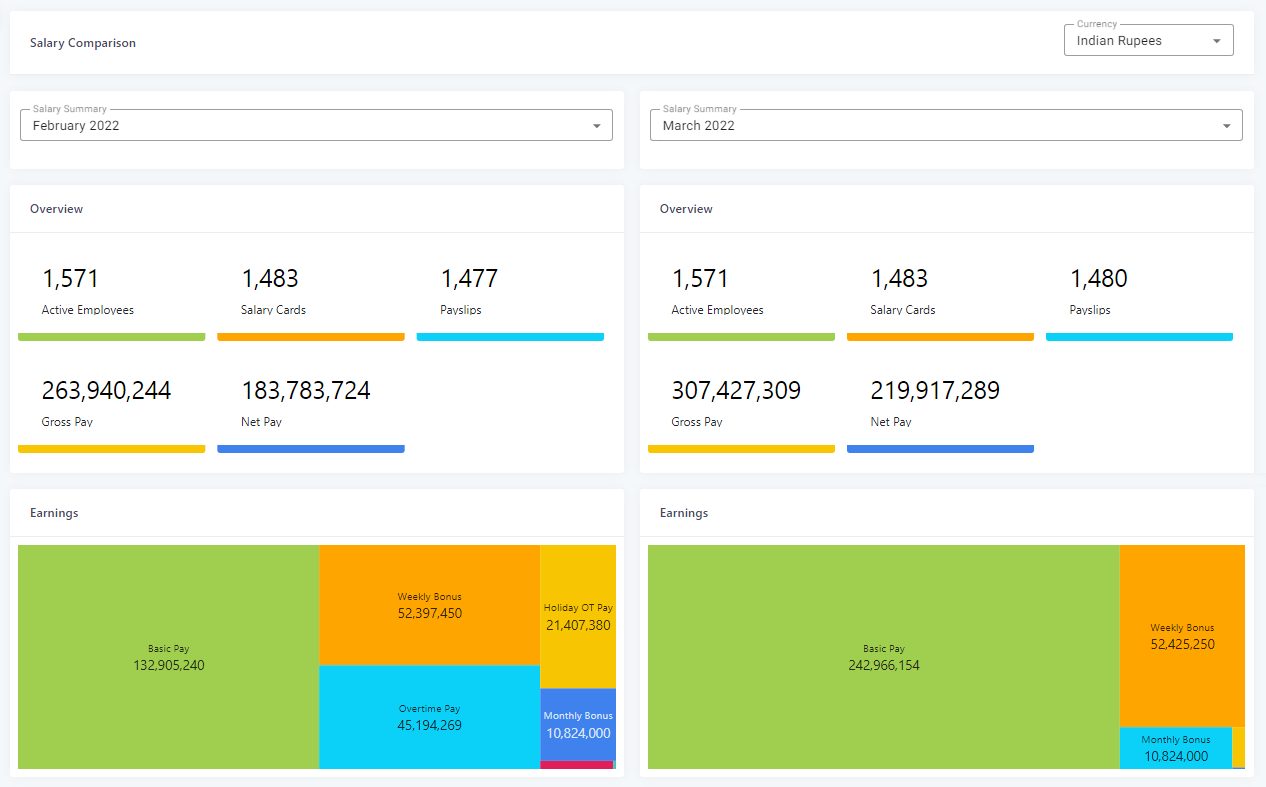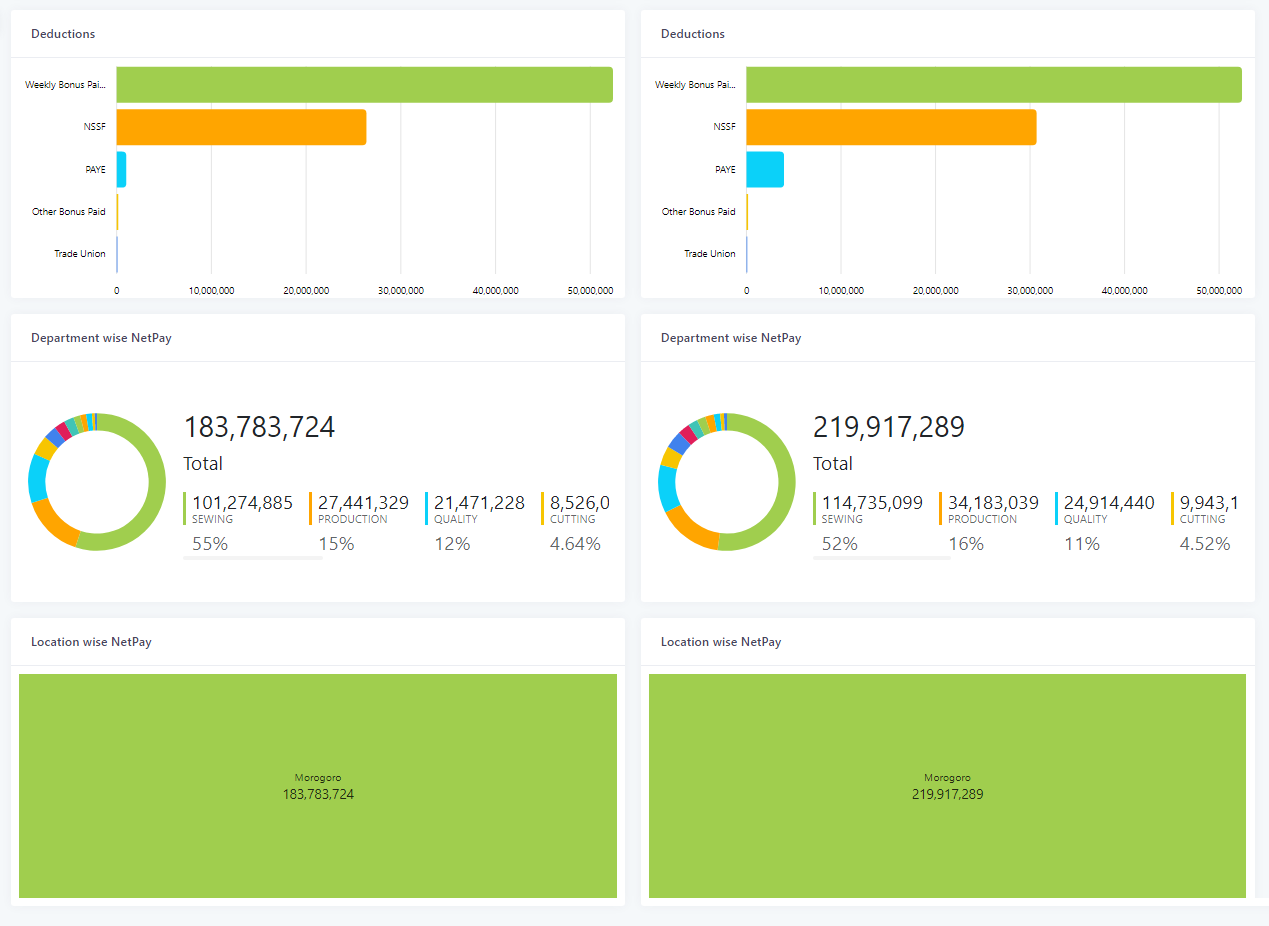Salary Comparison


The Salary Comparison Dashboard allows you to compare between any two salary periods. You can see two different salary periods side by side so you can observe the difference in Number of employees, Number of payslips, Gross Pay, Net Pay and so on. The dashboard also provides Salary Head wise totals on Earnings and Deductions, location and department wise costs, and so on.
This report shows a list of employees whose salaries are different in the selected salary periods with salary head wise details on how it is different. This report is usually used to find the differences in payroll for the current month in comparison with the previous month.
The salary comparison dashboard helps the Top management to make decisions on a processed salary period. Salary Comparison reports are usually used by auditors to identify the changes between two Salary Periods and is really helpful when you are managing a lot of employees.
Key Functionalities:
1. Side-by-Side Comparison:
- Visual Overview: Effortlessly compare salaries side by side between two chosen periods.
2. Earnings and Deductions Breakdown:
- Granular Analysis: Drill down into detailed breakdowns of earnings and deductions for each salary period.
- Identify Variances: Pinpoint changes in individual components contributing to overall compensation.
3. Department and Role-Specific Comparison:
- Customized Views: Tailor comparisons based on specific departments or roles within the organization.
- Strategic Insights: Understand compensation dynamics within different segments of the workforce.
4. Historical Salary Trends:
- Track Changes Over Time: Access historical salary data to identify trends and patterns.
- Strategic Planning: Use historical insights for future salary adjustments and planning.
Benefits:
1. Informed Decision-Making:
- Data-Driven Insights: Make decisions backed by comprehensive data on salary changes.
- Strategic Planning: Align compensation strategies with organizational goals and industry standards.
2. Transparency and Fairness:
- Promote Transparency: Enhance transparency in compensation practices.
- Ensure Fairness: Identify and rectify any discrepancies to ensure fair compensation practices.
3. Employee Satisfaction:
- Clear Communication: Transparent salary comparisons contribute to employee satisfaction.
- Predictable Outcomes: Provide employees with insights into salary adjustments, fostering a positive work environment.
4. Compliance Assurance:
- Adherence to Regulations: Ensure compliance with legal and regulatory requirements in compensation.
- Risk Mitigation: Identify potential risks related to non-compliance and take proactive measures.
Conclusion:
Our Salary Comparison feature is not just a tool for data analysis; it’s a strategic asset for organizations aiming to navigate the complexities of compensation management. By offering in-depth insights into salary dynamics, this module empowers organizations to make informed decisions, foster transparency, and ensure equitable compensation practices.
